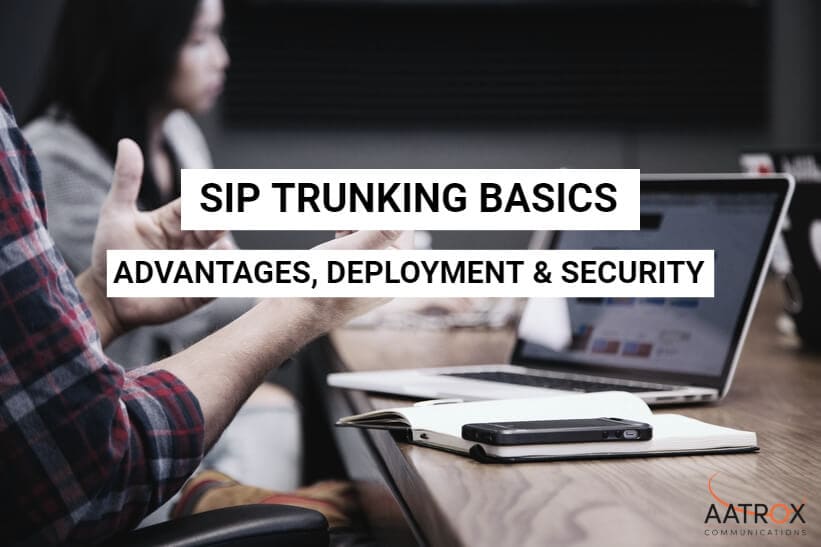Businesses of all sizes are making the move from traditional PSTN lines to SIP trunking, due to the reduced costs and improved scalability associated.
SIP Trunking – SIP Trunking allows telephone services to be delivered over IP – a core part of Voice over IP, or VoIP
While there are a number of impressive benefits in SIP trunking, it does also create new security challenges. By having a thorough understanding of the technology and working with experienced partners or providers, these challenges and risks can be minimised, and SIP trunking can be used to its full potential.
Advantages of SIP Trunking
Reduced Costs
Perhaps the most notable is the significantly reduced costs compared to a traditional phone line. As SIP trunks only require and IP network, the setup costs, especially when compared to traditional telephony, are low enough for essentially any size business to take advantage of.
Scalability
Adding additional SIP lines or trunks is a quick and simple process. Depending on your bandwidth and your chosen phone system, the number of trunks can easily grow with your business. The same goes if you only increase your staff seasonally. The ability to add or remove lines far surpasses that of traditional lines.
Business Continuity
SIP trunking allows for simple rerouting and failovers to other numbers should something go wrong with your internet connection, or in the event of an emergency.
Read about a previous deployment where a failover was required by the end customer.
Free calls between remote offices
Setting up a bridge configuration is a simple process when using an IP PBX such as 3CX. A bridge configuration will enable you to call remote offices for free, as if they were in the same building.
Fax to Email
Reduce paper waste and receive your faxes anywhere with the fax to email support available over SIP and most phone systems.
Deploying SIP
An important consideration to be made when deploying SIP trunks is the impact it will have on your company’s network bandwidth.
While you don’t require much speed to support VoIP, issues may arise during a video conference or if there are number of other people on the network using applications requiring a lot of bandwidth.
Options to minimise the risk of this impacting your call quality is to implement QoS (quality of service) or Packet Prioritisation.
Learn more about improving voice quality.
SIP Security
As with any business use of the IP network, a prime concern will always be security. While SIP trunking does present new vulnerabilities over traditional telephony, planning for security and following standard security principles will assist in minimising this risk.
SIP trunking and VoIP is very quickly becoming the standard for businesses across world, and with the many advantages accompanying them it’s not difficult to see why.
There are a number of VoIP phones available – softphones or physical desk phones that add to the functionality and ease of use, adding to the benefits of switching to VoIP.
Having a basic understanding of these technologies is the best way to decide on a phone system and provider that is best for your company and business needs and ensuring you get the most out of your phone system. You can read more about unified communications as a whole here.
For more information, visit our FAQ and Definitions pages, or get in touch with us today to discuss how SIP trunking and VoIP can improve your business communications.
